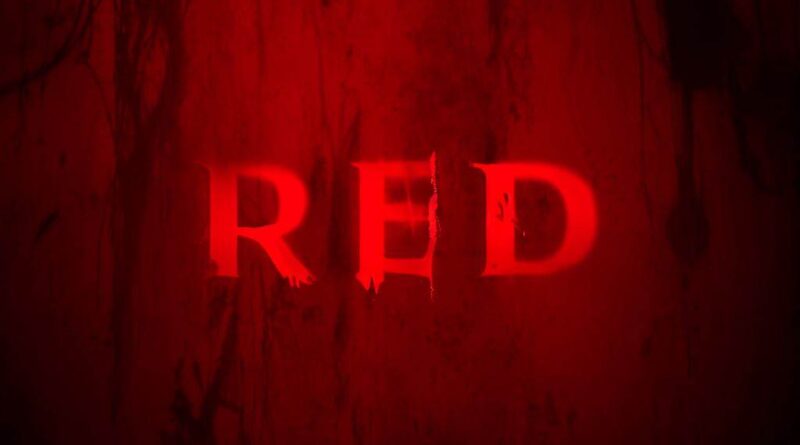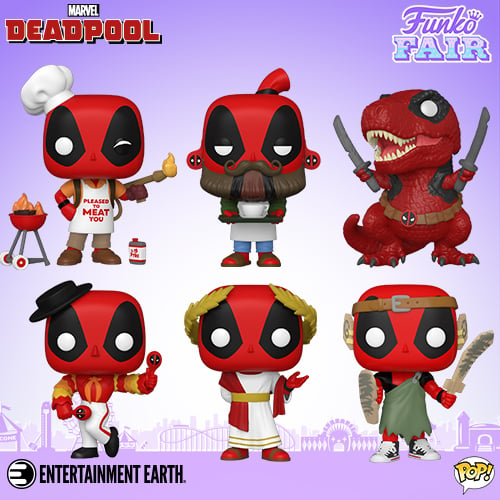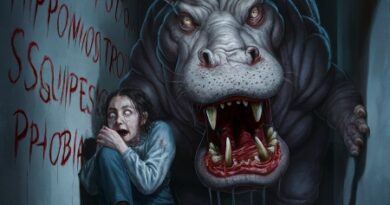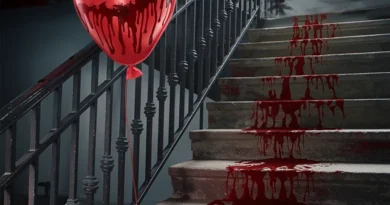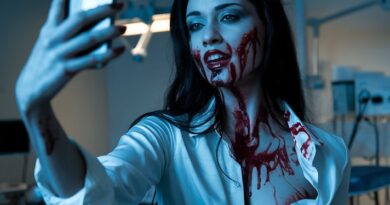Why Is Red A Scary Color? Horror Films May Have The Answer!
It happened right when we started this site. You don’t need to be a marketing expert to know that choosing a logo is one of the basic steps to building any entity, including a website, and that the logo must express the website’s vision. Very early came the stage where we had to think about the main color in the logo and, in general – what color palette we would use on the site. Since this site is dedicated to horror, the answer seemed clear or even unequivocal to us: red, what else? So our logo includes red, mainly representing blood, and we also chose red color pallete for the menus, buttons, and more.
We didn’t overthink the meaning of the color red, and we didn’t read any studies on the subject. When we talk about the ultimate horror color (or at least one of the main ones), it also appears in variations in countless horror films and brings up connotations of fear and danger. What exactly makes red a scary color, and why did choosing it seem so natural to us? In the following review, we will learn why is red a scary color, and present the main connection between the color red and horror, which is closer than you think.
Why Is Red A Scary Color According To Science?
From an evolutionary point of view, we believe humanity has evolved to associate certain colors with different connotations. The connection between red and danger or warning also seems close in this respect. Red, after all, recalls elements that symbolize danger in nature: for example, blood, fire, and even poisonous berries, which man has learned to stay away from in his efforts to survive in the wilderness.
Quite a few studies have been conducted over the years, and some have shown that red may have physiological effects on the body that we recognize as “scary.” According to some studies, exposure to red may, for example, speed up the heart rate and blood pressure, changes that we now associate with fear, anxiety, and other troubles. Red is further associated with emotions considered “strong,” such as anger and aggression, which may frighten some people.
Of course, to this very day, we see that red is associated with many of the dangers surrounding us. Take, for example, your last drive on the roads, where you probably encountered red warning signs. Red is connected to alarms and wars in various ways. Some will say that this reaction to red also exists in animals. For example, the bull is furious when he encounters the color red. However, the fairly established evidence today is that a bull is generally color blind, so red irritates him like any other color.
💀 Killer Deals & Scary Recommendations 💀
🎭 Costumes & Accessories
HalloweenCostumes Fun Costumes Entertainment Earth
🛒 Online Shopping
AliExpress Amazon Walmart Etsy
🧛 Collectibles & Horror Brands
Funko Hot Topic Lego Spirit Halloween
🎢 Attractions & Tours
GetYourGuide Tiqets Viator Klook
📖 Blogs & Horror Sites
Bloody Disgusting iHorror Fangoria
🩸 Disclaimer: Some links are affiliate links. The price stays the same – it just helps keep the site alive 👻
Horror Films And Red: A True Romance
From the rather basic overview of the dark sides of red, one can learn why its use in horror films is widespread on any scale. It is not that we are claiming that it is the dominant color in all movies, but the fact that it symbolizes, among other things, blood and danger explains its increased presence in horror films. The red next to that represents violence, which is also common in horror movies.
The red color is prominent in horror films that place Gore at the center because there is nothing like jets of blood to accompany a scene of decapitation or abuse of an unfortunate person. There are quite a few iconic scenes about the purity of red in general, and the blood in particular, for example, the famous elevator scene in “The Shining,” which also received quite a few references and imitations (one of the most successful of which was in “Evil Dead Rise,” the last film in the “Evil Death” franchise).
In general, the red color recurs many times in that masterpiece of Stanley Kubrick, for example, the color of the carpets in the hotel or that mirror scene with the word “Redrum,” and it’s all but accidental. A more contemporary example is “Insidious,” which already in the first films showed a close connection to red with the monstrous creature from that famous Jump Scar, the red lighting that symbolizes the entrance to the world of the demon or even the last film in the franchise, one of the central objects in which is a red door.
Try to think for a moment about some of the biggest icons of the horror world. Not all of them have the red shade, but it certainly does in many of them: from the famous Freddy Krueger sweater to Pennywise’s red balloon to Chucky’s hair color. You can see in quite a few films that the color red symbolizes the character’s imminent death and the emerging danger, which is, of course, not only in horror films. One of the exemplary uses of the color red in cinema is in Steven Spielberg’s “Schindler’s List,” in which he “paints” an innocent girl who will go to her death red, while the rest of the film is black and white. Quite a bit has been written about the meaning of this choice by Spielberg, starting from the desire to express the innocence of the children who were killed in that damned war to the attempt to create empathy and see that the Holocaust is not limited to numbers, but that each death is a whole world.
Another explanation to the question why is red scary is the meanings we may connect to this color. In horror films, you can see the gap between the “childish” red color and its actual use, sometimes creating an opposite or even ironic meaning. The excellent final scene of “Don’t Look Now” from 1973 follows an innocent “girl” in a red coat, who quickly turns out to be not so much a girl and not so innocent. Another example is the horror twist of Red Riding Hood, which we have already seen in several films – for example, “Red Moon” with Amanda Seyfried – perhaps as part of the common trend today to turn fairy tales and children’s stories into horror films (mostly mediocre to bad).
Not Just Horror: Other Meanings Of Red
Our attitude to colors depends on many parameters. Although we may think that red has global “scary” connotations, a person’s personal experience can determine how he perceives red. Culture or time also has an effect, so what is true in one place and at a certain point is not necessarily a fait accompli in another time and place. For example, the writer of these lines likes the color red very much because his favorite football team, Liverpool, is red and white. In the case of a family member who supports a team in blue which I cannot say its name, the color red does not enter the house. We once impulsively bought a blue balloon for his child’s birthday, and the balloon quickly found its place in the trash.
Another important point is that red not only signifies danger, so trying to understand its symbolism is also context-dependent. The specific shade of red, the use, the context, and the medium can explain what red will mean in a given case. Do a quick Google search or remember your last dates with your spouse; you will surely know that red is the color of love and romance. We see it in countless cases: from paintings of red hearts to romantic horror films, in which the color red plays a role in the poster as well as in the visuals of the scenes. The use of red in this type of text can be different compared to a horror film.
In China, another example, red represent luck. Here you’ll find out why is red considered lucky in China.
One of the most important studies in the field showed that red makes men see women as attractive and sexually desirable, unconsciously. Another reason that allows us to understand why the femme fatale or seductress characters in horror movies who are revealed to be monsters, demons, or psychics will wear red in quite a few cases. In “Jennifer’s Body,” for example, the red color appears integrally in the heroine’s outfits (when Megan Fox does wear something serious on her), in the slightly excessive makeup, and, of course, also in the blood that covers her dress in the central killing scenes of the film.
The Conclusion: The Graphic Designer Can Rest
The use of red in horror is not coincidental, given the effects of red on us and the reasons why is red a scary color. We will likely see the red star in major horror films in the following years, which is great news. After all, we don’t need to change our website’s logo or color palette now, do we?

